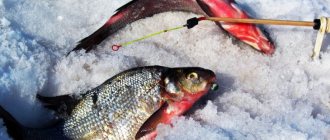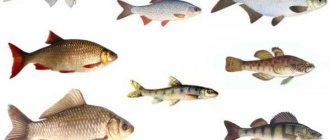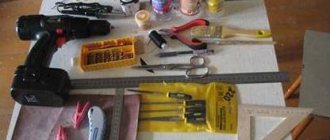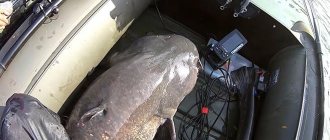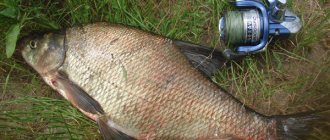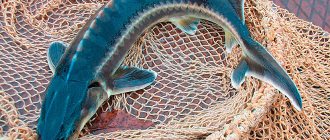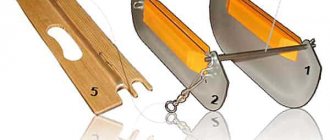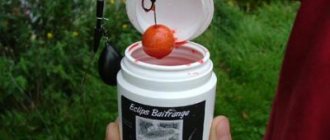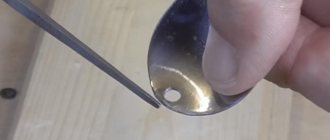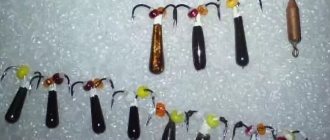Yuri 09/28/2020 962
Every experienced fisherman has his favorite proven gear, with which both frequent bites and heavier specimens are all winter paraphernalia that bring good luck. Convenience and easy installation of gear is especially necessary in winter. At this time there is severe frost, knee-deep snow, and even heavy equipment with which you need to walk tens of kilometers.
In this regard, we suggest considering the talents of folk craftsmen, among whom we liked the fishing rod based on a champagne cork.
Useful knowledge about traffic jams
Wine and cognac drinks are sealed with real cork products. They do not react with the drink and do not spoil the taste. The cork known to us today appeared relatively recently - in the 17th century. It is made from oak, which grows in some European countries.
It is so whimsical that its habitats are quite small. The largest number of trees is in Portugal. Cork oak bark is removed in a special season, and only from trees that are over 25 years old. It is removed in small sections to avoid harm to the plant.
Cork fishing is a whole industry that involves many people and modern equipment.
DIY knife handle made from wine corks
A blade with a balsa wood handle is called a floating knife. The handle must be made to calculate the buoyancy of the product when it gets into the water. A knife with such properties is popular among fishermen. Only experience will allow you to achieve buoyancy.
For the appropriate type of handle, we recommend a wedge no longer than 11 cm, a butt no thicker than 1.5-2 mm and a width no more than 2 cm. Increasing the thickness or length of the blade automatically leads to an increase in the handle in the same directions. The product will look awkward and ridiculously funny.
Before making a knife handle from champagne corks, consider these parameters. If the situation is stalemate, try blade reconstruction. Shorten it a little, if the design allows, cut out the valleys or grind off the butt. But the barrel-shaped handle is clearly inconvenient and unpresentable.
The essence of the cork fishing method
The technique for using such non-sports equipment is as follows:
- The fish bites viscous bait, inside of which there are several hooks with foam. The latter makes the hooks weightless and invisible in the water.
- The fish gradually absorbs the bait, and along with it the sharp hooks, but when leaving, it is caught by them. In this case, the self-hooking effect is triggered, which is why this type of fishing is called non-sport fishing.
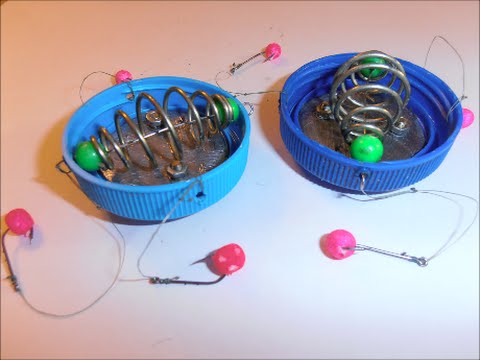
However, fishing with a cork is quite effective, so every year it is increasingly gaining popularity among fishermen.
The disadvantages of the gear are:
- inability to catch predatory fish species;
- fragility of gear;
- inability to fish in large currents;
- poor visibility of gear at the bottom.
Homemade cork handle for a knife
Champagne corks look irregular in shape after uncorking. This can be easily fixed by putting them in the microwave for 30 seconds. Having acquired an even cylindrical shape, we send them to work. To obtain one element of a inlaid cork handle, you need to perform several manipulations:
- Taking two corks, carefully cut off a small piece lengthwise from each of them. Smooth out the cuts with sandpaper.
- Having coated the cut with glue, firmly glue them to each other.
- After drying from a single workpiece, it is necessary to cut off two pieces again with a longitudinal cut. You will get a rectangular shape.
- A hole is made in the center for mounting on the shank.
The number of such rectangles depends on the length of the shank. The bolster and pommel must be made of wood. When forming the handle, the cork will be greatly deformed on the metal parts.
Having made the bolster and the required number of rectangles, the handle is ready for assembly. It must be assembled like a regular handle. Putting the parts on the shank one by one, coating everything with epoxy resin. Having collected, we send it to the press.
After drying for 24 hours, we bring the handle to the desired oval shape. Sand with sandpaper. And you can soak it with varnish, well diluted with acetone. The process must be carried out by repeated dipping into liquid. Then leave until completely dry.
We make a “poacher’s” donk from cork
“Cork” is designed for catching mainly large fish, such as carp, bream, large roach, rudd. However, you can adapt to catching smaller fish by experimenting with the size of the hooks and the diameter of the fishing line.
According to the author, this gear is very effective and allows you to be with the fish even on days when most fishermen don’t bite. According to him, bites begin to follow almost within a couple of minutes. Of course, a lot also depends on the place of fishing.
Tools and materials for manufacturing: – 1 aluminum and 1 PET bottle cap; - lead; – fishing line for creating leashes and hooks (4-10 number according to the old standard); – nylon thread and clamp for attaching leashes; – a piece of copper wire; – awl, scissors; – bait (if already fishing).
Let's move on to the manufacturing process
Step 1. Create a sinker
You need to take an aluminum plug and use an awl to pierce two holes in it as in the picture; exactly the same holes need to be made in the PET plug. Next, a copper wire is inserted into the aluminum plug; it will connect the two plugs together. Then you need to melt lead or tin and pour the metal into the aluminum plug so that it does not reach the top turn of the plug. If a cork from Baltika No. 3 is used, the PET cork will be able to fit into its upper turn and the design will be of better quality.
Step 3. Prepare the tackle for casting
Before sending the tackle to the bottom, you need to put bait in it and install the hooks correctly. As food, the author uses ordinary bait for catching carp or bream, which can be bought at a fishing store. And in an even more conservative version, you can prepare the bait yourself.
Fishing technique
First of all, you must decide where exactly you will fish. After all, the result of good fishing depends on choosing the right place. It is best to fish with a cork in reservoirs with stagnant water or a weak current, because if the current is strong, it can very quickly wash away even the densest and most viscous bait from the feeder.
You can fish with a cork in the most remote thickets, when fishing in which with any other gear you cannot avoid snags.
The casting method depends on the reservoir. On a spacious lake with little vegetation this will be much easier. Cast bait near the junction of water and grass or into windows of clear water between weeds. After casting the tackle, the fishing line must be tightened so that it does not sag. A bell is attached to the fishing line to hear the bite.
The float should not sit very deep in the water - less than halfway. The distance between the hook and the float is slightly greater than the depth of the reservoir in the place where you are fishing. The fish quite quickly finds the bait and eats it, sucking up the mess with the hooks.
It is impossible to miss a bite, because the fish is firmly detected and reports this moment to your alarm. All you have to do is pull out the fish. Many fishermen are still afraid of missing a bite and hang bells as alarms.
You can learn how to make a bite alarm with your own hands from our article.
Fishing rod for winter - a practical guide to making it yourself
Winter fishing is somewhat different from summer fishing. This type of fishing begins when the first, fairly strong layer of ice appears. You can read about how to find out the thickness of ice in our other article.
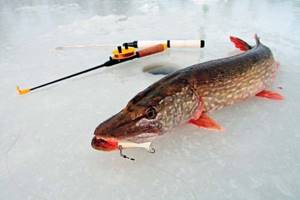
Since there is no need for long casting, you don’t need a long fishing rod . On average, the length of fishing rods for summer fishing ranges around three meters, while winter fishing rods, on the contrary, are a small piece of material suitable for the fishing rod, on one side of which there is a comfortable handle, and on the other, a flexible tip. The length of such a fishing rod is 30-50 centimeters .
Fishing rods for winter fishing can be divided into several types:
- Float fishing rods - such fishing rods are no different in the principle of fishing from summer ones. Floats are also used to detect bites.
- Floatless – these fishing rods do not have a float and are designed for jig fishing.
- Using a spinner or a balancer – these fishing rods are used for catching predatory fish.
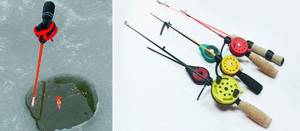
In this article we will take a closer look at what types of fishing rods there are , which one to choose, and also tell you how you can make a fishing rod for winter fishing with your own hands .
What is a “nipple” tackle?
Such tackle as a nipple is in good standing with many fishermen.
This simple fishing device has a good advantage - when the hook is retracted, the fish is hooked on its own. This allows it to be used by inexperienced fishermen. The second name is “donka”, since the tackle is well suited for bottom fishing. A reel with fishing line is attached to the rod, at the end of which there is a leash with a sinker. A “nipple” with hooks is attached to this design.
A nipple is a feeder that contains bait. The hooks on which the catch is caught can either be completely hidden using foam balls, or the tip can be left visible.
When the tackle is thrown into the water, the fish approaches it and begins to suck the bait. But it eats not only complementary food, but also hooks.
In this way, the fisherman notices the bite and fishes for the crucian carp.
What gear designs exist? Types of tackle
There are many options for such equipment, although they have the same operating principle. The most popular options are two tackles:
- nipple-spring;
- plug nipple
The feeder in the spring nipple is a metal spring or spiral. In such a feeder there is a load inside, and a fishing line and leashes with hooks are already attached to it. If fishing takes place in still water and at shallow depths, you can refuse the load.
The plug nipple is gaining immense popularity among fishermen with each fishing season. The feeder is a plastic lid that can be used for yogurt or mineral water. A lead disc is attached to the top. There are several holes on the sides of the feeder: one for attaching the base to the fishing line, the others for leashes with hooks.
Types of springs
Today, when catching peaceful fish, gear that operates on the principle of suction bait is increasingly used. They are based on the fact that crucian carp really likes to suck food objects lying on the bottom into its mouth.
That's why fishermen came up with a design that included a feeder with viscous bait, where the hooks were hidden. Having approached it, the fish begins to actively absorb and suck in food, which is why this type of equipment is called a “nipple”.
There are quite a lot of options and varieties of such gear. Only used for catching crucian carp:
- Pacifier plug.
- Spring nipple.
A cork is a simple homemade fishing tackle, which, as a rule, is used to catch non-predatory fish species in freshwater bodies. For the most part, it is intended for fishing with passive types of bottom fishing. Also, another feature of this gear is that it is used exclusively at the bottom of reservoirs.
This type of equipment appeared in the practice of fishermen not so long ago and has a large variety of designs. All of them are united by the basic principle of catching crucian carp with a cork - a feeder tackle made from a bottle cap and equipped with several hooks is filled with bait and thrown to the bottom.
This is a fairly simple, but very effective way of catching crucian carp in the summer, bringing excellent results. When catching crucian carp with a cork, its filler simultaneously plays the role of both complementary food and bait.
The advantage of this tackle is that it can be cast over long distances and deep underwater, which is especially valuable in the summer, when crucian carp stay at depth. It allows you to fish from the shore, without using a boat.
Fishing principle
Features of choice
For fishing it is very important to choose the right specimen, and for winter fishing this is especially important. First of all, you should decide what kind of fish the fishing rod is selected for; then it is important to pay attention to such parameters as lightness, convenience and functionality . The design should not malfunction during fishing, so you should not use a plastic whip, because it may burst. A good choice would be a carbon fiber model that is equipped with a reel with an open lock.
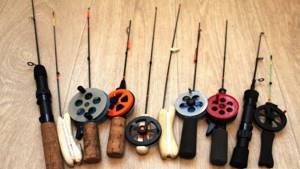
Nowadays, specialized fishing stores have a large selection of different fishing rods and tackle, but there are a number of reasons why a fisherman might want to make a fishing rod at home, for example:
- cost savings;
- the fisherman is a big fan of tinkering and can make everything himself;
- I didn’t like anything in the store;
- There is no store nearby at all (relevant for villages).
It is important to know! Making a winter pike-perch fishing rod yourself is not as difficult as it might seem at first glance, and the materials and tools that may be needed are often in the arsenal of a DIYer, so there is no need to purchase anything separately.
How the tackle works
- the nipple does not get caught on the uneven bottom;
- fishing will be successful even if the fishing spot is overgrown with grass;
- practical and rarely gets confused;
- If you approach the manufacture or choice of design correctly, then leashes with hooks will not dangle.
Minuses
It has only one negative feature - in strong currents, the use of such gear is ineffective.
It's primitive. The cavity of an ordinary plastic bottle cap, weighted with a sinker, is filled with ordinary carp bait, brought to the level of “plasticine” during mixing, so that it is not washed out of the cork so much. All kinds of flavorings can be added to the bait ingredients.
In this plasticine with a slide, see photo below, hooks are masked, usually attached to two leashes made of nylon thread with any lock, tied to the main leash passing through the side (bottom) wall of the cork. A leash with a lock is threaded through the hole and attached to the main fishing line, usually I secure it through a carabiner.
The color of such “plugs” is usually white or yellow. However, there is no doubt that whether it is blue, green or red, the effect will be almost the same. After all, the catchability of such equipment is determined not by its color, but by the smell emanating from the nozzle.
The size of the hooks may vary depending on the fishing region and fish. Suitable from No. 4 to No. 10 according to the old numbering. After all, in the end, the calculation is carried out with an eye to the big one. Typically, the plug always sinks to the bottom with the weight down, so the bait will always be on top.
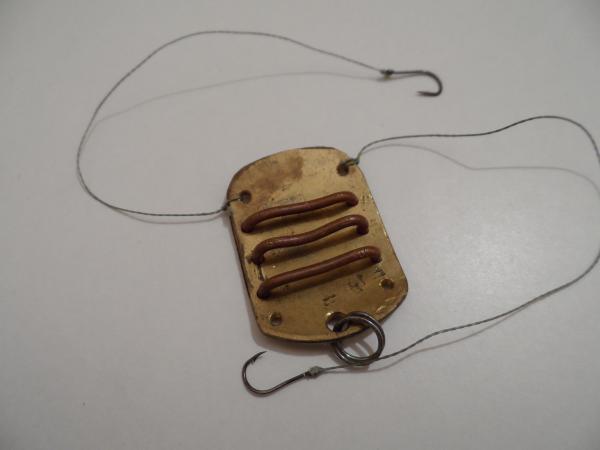
The fish quickly find it and eat it, sucking up one or even two hooks along with the “plasticine”; there were cases when two carp landed on one plug at once (naturally there were two hooks).
It is virtually impossible to miss a bite; the fish is reliably detected, and either with a powerful jerk or completely loosening the line, it signals the bite. Bells, bells, or whatever you are used to are hung as signaling devices.
For a tackle called a nipple, you will need any fishing rod. This can be either a spinning rod or a regular fly fishing rod. The most convenient way to fish with such equipment is to use a feeder rod and a spinning reel. Thus, you can easily fish out large specimens and cast the bait further from the shore.
When choosing a fishing rod, you need to pay attention to its length. It should not be too long or short. The best option is a medium “stick” - from 2.5 to 3.5 m. The reel may be the most budget-friendly, but the main thing is its reliability.
The “nipple” equipment can have a varied design, but all options are united by the presence of a feeder and several short leashes with hooks that are hidden inside it and complementary foods.
- If a lid is used as a feeder (good for a large bottle of water or dairy products), then such equipment is called a stopper nipple. As you already understood, it is made independently. To do this, several holes are made in the cork, a wire is inserted through them, to which the leashes and the main fishing line are attached. Most fishermen find the nipple plug more effective than other similar equipment. Its advantage is that it holds the bait better, preventing it from quickly being washed out or falling out.
- With another version of the “nipple”, the feeder is a spring or a spiral. Unlike a plug feeder, food is washed out faster from a spring. This is often an advantage, because it creates a larger bait spot that attracts fish from afar. In addition, the spring feeder has more open spaces, so crucian carp can eat food from different sides.
As for fishing line, it is better to use monofilament with a thickness of 0.3-0.4 mm. The “pacifier” option with braiding has also proven itself quite well. At least, if leashes are made from it, then the number of bites realized increases sharply due to the rigidity of the cord.
There are many benefits to pacifiers. Let's list the main ones:
- Possibility of local feeding.
- There is no chance of the equipment getting tangled or snagged, because all the hooks are hidden in the bait.
- Fishing with several hooks at once.
- There is no need to use attachments - the hooks can be left empty or you can put foam balls on them.
- Excellent for fishing in overgrown reservoirs.
Float
This fishing rod is also suitable for winter fishing; the main feature is that it does not need to be held in your hands. It is installed on a special stand near the hole. You can display several fishing rods at once. All that is required from the fisherman is to monitor the bite and ensure that the holes do not freeze.
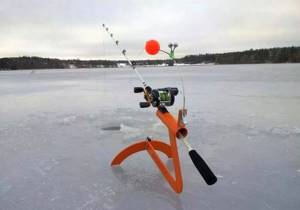
Making such a fishing rod with your own hands will not be difficult; all you need is to make a float. A champagne or wine cork or a piece of polystyrene foam is ideal as a material. The length of the product should vary within 3 cm, and the width 5-6 cm. It is recommended to paint it in a bright color. It does not require a reel, since the equipment is wound directly onto the base of the fishing rod, but you should not neglect the sinker.

You can also make a winter fishing rod for crucian carp with your own hands. You can use a small plastic tube to make the handle. Let's look at the manufacturing process step by step:
- You should cut a small piece from the tube, about 15 cm , less or more. It will be convenient for anyone.
- You can attach either a reel or multiple staples to the front.
- The handle should be insulated ; for this you can use any available material, for example, polystyrene foam.
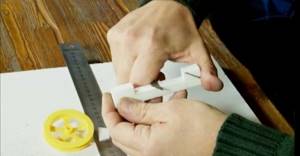
- The ends should be sealed with stoppers. Don't forget to add weight.
- You must first make a hole in the front plug for the whip.
- Next you need to insert the whip into the hole and secure it.
- Afterwards the legs are made; for this you can use cork, plastic, and so on.
Features of fishing with a cork
When catching crucian carp with a cork, it is necessary to carry out the process of placing hooks into the cork itself in such a way that the hooks themselves are located with their ear at the bottom, while the bend of the hook is located at the top. You can equip the hooks with foam balls.
This method of catching crucian carp is simply impossible without the use of a tasty feeding agent designed specifically for crucian carp. The process of making complementary foods should be carried out immediately before the actual process of fishing for crucian carp. Mixing the components should be done during the fishing itself, adding body water.
In order for the scents of the aromatics to last a little longer, a piece of foam rubber soaked in the aromatic substance is fixed to the bottom of the cork before adding complementary foods.
The feeding is placed in such a way that it forms a small mound with several edges. The hooks should not be placed to the very bottom of the cork, otherwise the crucian carp itself may have time to get enough and still not have time to reach the hooks.
When fishing for crucian carp with a cork, take with you several corks that are already ready for fishing. If you run out of complementary food on one, you can quickly change the plug with the help of carabiners, without wasting time on packing food for the crucian carp.
Mormuscular
Using such a model, you will need to hold it in your hands throughout the entire fishing. Therefore, it should be compact, light and convenient, but also not lose its functionality. Let's look at two interesting options for fishing rods for jig fishing. This is a reelless jig for use with jigs.
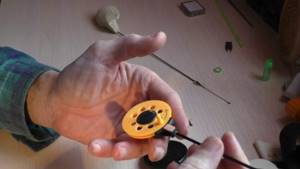
The reelless rod is a lightweight, convenient fishing rod. For production you will need the following materials: a wine or champagne cork, as an alternative, a piece of dense foam, any rod (an umbrella needle, etc.), a set of cambrics, an x-ray, glue and markers.
The manufacturing process is very simple:
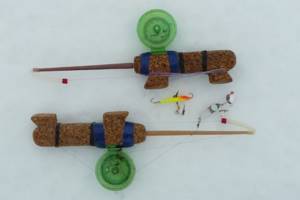
It is important to know! The whip can be attached both from the end and from the side. But in the second case, it will be more convenient to fish for larger fish, since this ensures the release of turns of the line.
For an attachment-mounted jig , this model is already more voluminous when compared with a reelless jig. The handle is made from foam, wood or cork and cut into a staple shape. A groove is cut in the handle for winding fishing line. In the front part, as usual, a hole is drilled for the whip. You can make it yourself, using, for example, a twig or a broken handle. The nod can also be made from a metal spring, an x-ray, or a plastic bottle. The nod holder is made from cambrics. You can also make a no-kick winter fishing rod with your own hands.
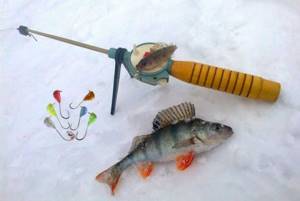
Making a fishing rod with your own hands
You can make the simplest fishing rod from a wine cork if you follow the instructions:
- Before you make a fishing rod, you need to pick up a whip. For this part, you can use the top element of a spinning rod or a similar part of an old winter fishing rod.
- Now you can make the rod handle. We take several corks and make a hole exactly in the middle. The diameter of the drill used for this should be smaller than the diameter of the whip.
- Coat the thick end of the whip and the inner surfaces of the hole in the cork with glue (it is better to use “Moment”). Now the whip needs to be placed in the hole. Allow the structure to dry thoroughly.
- Now you need to make a nod. Cut a thin strip from the X-ray film, rounded at one end. Make a hole at this end.
- Pull a movable ring of cambric two-core wire onto the whip near the handle. A fishing line is passed through the cambric and then fixed. The nod is located between the cambric and the cork.
- The nod needs to be adjusted. First, position it so that the edge protrudes 5 mm beyond the cambric, and then bend it and glue it to the cambric.
- After this you need to lay the fishing line. This can be done in two ways: trim the sides of the cork and wind the fishing line around the circumference, or make notches on the cork and lay the fishing line along the base.
It is recommended to perform the first tests of a fishing rod without an attachment with a cork reel at home, so that unforeseen situations do not occur during fishing.
A homemade winter fishing rod made from a wine cork will not only save money, but also make a good catch without much effort. In addition, you can take a lot of such products with you, which means there will be no hitches in the event of a breakdown or other trouble.
On a spinner or balancer
Predatory fish are caught with such baits, and, as you know, predators are found in the depths. Therefore, in the manufacture of such a fishing rod, special attention should be paid to the supply of fishing line . Also, such fishing rods are necessarily equipped with a reel. It is not possible to make a coil at home, so you will have to purchase it in a store.
Let's look at how to make a winter fishing rod for pike perch with your own hands. It is important to pay attention to the handle. It can also be made from a tube, but you will definitely need to insulate it. What is needed for this:
- Chop the wine cork into small pieces.
- Coat the tube with glue, leaving only the space for the coil.
- Roll it over the crumbs, wait until it dries and repeat the procedure./li>
- Having reached the required thickness, the handle should be treated with sandpapers of different grain sizes.
- When the handle is completely ready, you need to install the reel on it. To do this, you need to attach a reel seat to the handle; several clamps are suitable, between which the legs are clamped. You can also tape electrical tape on top.
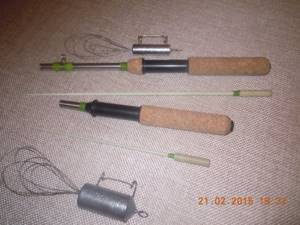
Next, you should make and install the whip. The last section of the telescopic fishing rod will do. As usual, a hole is made in the handle into which a whip is inserted and attached. Please note that the length of the whip should be about 70 centimeters .
Passage rings (at least 3 pieces) are attached to the whip. For fastening you can use glue, fishing varnish and thread. The final stage of making a homemade winter fishing rod will be strengthening the nod, but many do not see the point in this and skip this stage.
What kind of fish is usually caught with a cork?
As a rule, the following types of fish are caught with this tackle:
- Medium and large crucian carp.
- Carp.
- Bream.
- Carp.
- Mullet.
- Chub.
- Roach.
- Rudd.
- White amur.
- Barbel.
- Rudd.
The operating principle of the plug is very simple. Take the bait and stuff it into the cork to the top.
Next, place foam balls on the tips of the hooks and stick them inside the porridge on the cork. The result is a tackle that is not snag-free.
Once in the water, the bait is slowly washed out (the speed depends on the viscosity of the mixture). And it is very important that the tackle always falls so that the bait with hooks is always directed upward.
The hooks gradually lag behind the porridge and the foam lifts them above the cork. It turns out that the crucian carp rummages through the bait, sucks it and at the same time swallows the hooks with foam. In this case, the foam quickly gets into the mouth, and the crucian carp self-cuts. You also need to select balls of the required diameter so that they can easily lift the hooks.
You can not stick hooks, but attach maggots. In this format, the equipment will look more appetizing. You get this dish with a side dish and meat. They also dress a worm and a bloodworm. But maggots still work better.
Fishing Rod Made From Champagne Cork
A homemade winter fishing rod is made in the following cases:
Our article will discuss how to make three types of fishing rods:
- for mormyshing;
- for glitter;
- I'll deliver.
The first homemade winter fishing rod, I’d like to see the production, it’s a jig. This is the lightest gear in terms of weight and the selection of materials for it is simple. To make a rewinder, we will need:
- champagne cork or thick foam;
- a plastic umbrella needle or other similar rod;
- set of cambrics;
- lavsan, in other words, an x-ray;
- glue and colorful markers.
In the description of the fishing rod production process, we will be able to mention nods in passing, because this is a separate large topic, and it requires writing a separate article. In relation to the reelless fishing rod, we will say that for this fishing rod it is easiest to cut it out of lavsan or x-ray film, and assemble the fasteners from cambrics of various diameters.
A do-it-yourself winter fishing rod for jig fishing is made in the following sequence:
- We carve the handle of a fishing rod from cork or foam plastic. For this purpose, you need to chamfer the cylinder so that it looks like a skirt.
- Drill a hole in the cork.
- Glue it or tightly insert the whip there.
- We mount a nod.
- We reel in the fishing line and tie the jig.
A note regarding attaching the whip to the handle. There are two possible options according to the desire of the fisherman:
In the 2nd case, the turns of the line are likely to be dropped, which helps when fishing for a large trophy.
In the bait version of jig fishing, a homemade fishing rod of a larger design is used. Its handle is cut out of polystyrene foam, cork or wood in the shape of a bracket; this shape is called a “filly” in the fishing community. There a groove is cut for winding the fishing line, producing a typical reel. A hole for the whip is drilled in the front end.
- iron spring;
- lavsan or x-ray film;
- from a plastic bottle.
Bait for catching crucian carp using a cork
Successful fishing with the cork method for crucian carp depends entirely on the success of making bait for crucian carp. Many fishermen began to use ready-made, commercially available feeding products.
But a real fisherman must make the means for complementary feeding himself. The fertilizer is prepared to be quite viscous.
It should be slightly stretchy in composition. Although the feeding density parameters should not be excessive.
One of the simplest ways to make fertilizer for crucian carp is to mix bread crumb and cake mixture. A small amount of flour should be added to this mixture.
Among other things, you can use the addition of a small amount of dough. Flavorings such as cinnamon, coriander, garlic are necessarily added, or store-bought flavorings are used.
Another, also quite simple way of preparing the feed would be to mix canned corn in a crushed state and lightly roasted sunflower seeds, and add the juice from the corn. Some flavoring is also added.
Corn groundbait
To prepare it you will need:
- a jar of canned corn (preferably Bonduelle);
- a spoon of sunflower oil;
- spoon of sunflower seeds;
- honey;
- breadcrumbs;
- two tablespoons of linseed oil.
So, you need to grind the corn in a blender, and fry the sunflower seeds a little in a frying pan. Then grind in a coffee grinder. Add the resulting mixture to the corn. Then add a spoonful of vegetable and linseed oil there. At the end add a spoonful of honey.
Mix all this thoroughly, turning the mixture into a homogeneous thick porridge. Just before fishing, you should add a handful of breadcrumbs to it to make the mixture more elastic and aromatic.
Carp and crucian carp, which are distinguished by their craving for aromatic and sweet mixtures, will certainly not refuse such bait.
Pea groundbait
- peas - one glass;
- corn - half a glass;
- water - three glasses;
- sugar - three tablespoons;
- honey - one teaspoon;
- sunflower oil - one spoon.
Prepare the bait in this way:
- To boil water.
- Pour the peas into boiling water and stir thoroughly for ten minutes until they are thoroughly boiled.
- After thirty minutes, add the corn and cook for another half hour. It is very important to constantly stir all this time, otherwise if the porridge burns, the fish will smell the burnt smell and will not bite.
- At the end of cooking, add sugar and honey.
- Cover the pan with a lid and let the bait sit for two hours.
Bread-based bait
- black bread;
- makha or roasted sunflower seeds;
- potato;
- vegetable oil;
- anise oil.
Preparation:
- Boil the potatoes and grind them in a blender.
- Grind the flour.
- Add black bread, flour and butter to the potatoes. Mix it all well with your hands to form a thick, homogeneous mass. This bait is very effective, since most fish always bite on it perfectly.
It is well known that crucian carp really love the smell of roasted seeds. Therefore, many bait mixtures for crucian carp contain cake or ground seeds. The simplest recipe for cork involves just two ingredients plus flavoring.
Simply take a loaf of bread, soak it in water and mix it with cake. Cake and bread must be fresh. It is better to take white bread and finely ground cake. But it’s even better to use roasted ground seeds. They smell just really good. As a result, we will get such a soft mass that, when it gets into water, it immediately begins to wash out. On a stagnant pond, such bait will produce a good cloud.
This is the calculation. The crucian carp quickly notices such a cloud and begins to absorb the bait. Sooner or later the hooks will end up in his mouth.
Another option is to use mastyrka mixed with breadcrumbs. The result is a very fragrant and high-calorie mass.
Add enough crackers to get the same consistency as in the first case. It would be good to use this bait not only for crucian carp, but also for carp, bream, roach and other fish.
In general, a mixture of peas and crackers is very successful for bait. It’s high in calories, smells great (if the ingredients are fresh), and is very cheap.
And when catching crucian carp, you don’t need expensive bait. Homemade ones made from simple ingredients work great.
The third option is to use store-bought crucian carp mixtures mixed with millet or the same boiled peas. We make the density the same as the first two options.
As for flavorings, garlic and anise are often added. Honey has proven itself well. This natural component is added to mastyrka, and a sweet mixture is obtained. Crucian carp, bream and carp are crazy about it.
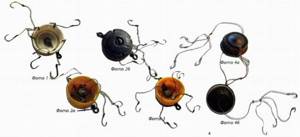
Good fishing online stores will allow you to purchase any fishing goods at competitive prices!
The fisherman's calendar will allow you to understand how all the fish bite depending on the time of year and month.
The fishing gear page will tell you about many popular gear and devices for fishing.
Fishing baits - we describe in detail live, plant, artificial and unusual ones.
In the bait article you will get acquainted with the main types, as well as tactics for using them.
Learn all the fishing lures to become a real fisherman and learn how to choose the right one.
Cork handle with minimum tools complete manufacturing process
This widely rumored type of winter fishing rod is identical in production method to the universal fishing rod, but its production requires a more painstaking approach due to the greater responsibility of the gear when using bait in fishing for large fish. Therefore, we will describe the process in detail, revealing certain aspects.
Let's start with the production of the handle. It is made from the same plastic tube, an umbrella handle, a garden sprayer or something similar.
Let's use a cork for this purpose. The process of insulating the handle looks like this:
- We crush the cork with a rasp (also called a grater) into small pieces.
- We coat the tube the length of the future handle with glue and leave out the space for the coil.
- Roll it over the crumbs.
- We wait until it dries completely and then spread and roll again.
- When the desired thickness of the handle is reached, we first process it with a rasp, then with ratfile and sandpaper of different grain sizes.
After completing the creation of the handle, attach the reel. For this purpose, we mount a reel seat made of two clamps to your tube, between which we clamp the legs. We wrap insulating tape on top to prevent contact of hands with cool metal.
- plastic inertia;
- “meat grinder” with a small spool;
- small cartoonist.
We close the ends of our handle with plugs, in the front we make a mounting hole for the whip, where we insert it, its length should be 60-70 cm.
Now you need to attach the passage rings to the whip; there will be two or more than 3 of them. We mount the flower on the tip, and distribute the others along the length of the form. For fastening we use glue, threads and fishing varnish.
Equipment equipment
For fishing with a cork, you should prepare the following parts of the tackle:
- Rod. It is desirable that it be telescopic and have a length of at least two and a half meters. The test rod must be at least 35 grams.
- Coil. It is recommended to use a high-quality spinning reel with a spool size of 3000.
- Fishing line. It is best to use monofilament line with a diameter of 0.25 mm and a length of 40 meters.
- Leashes. They need to be made from braided fishing line. Each leash should be about twenty centimeters long.
- Hooks. Typically, they are used depending on the bait. It is recommended to use hooks with sizes from six to ten. It is also important that they are of high quality and sharp.
- Bite alarm. It is not at all necessary to use expensive electronic alarms for this purpose. An ordinary bell, which only needs to be installed correctly, will be no worse.
- Small weight. For this tackle, you should use a small olive or teardrop-shaped lead weight. It is also necessary that it have a natural color that will blend with the water. It is best if it is brown or dark green.
- Cork. It can be taken from almost any plastic bottle. The main requirement for it is simplicity and spaciousness, so that as much bait mixture as possible can fit into it.
Cork handle for winter fishing rod
We finish making a fishing rod by strengthening the nod, if it is required; fishermen probably do without this element of the tackle.
An additional type of winter fishing rod is the self-hook. This is, in a certain sense, a posture designed to respond to the smallest pulls of fish, which for some reason may not be seen by the angler.
There are several designs of self-cutting gear; we will carefully describe one of them.
It is not difficult to make such equipment for winter fishing. It is enough to have a piece of wood, plywood or chipboard for the base, several screws and two types of wire: narrow - for the production of springs and thick for levers.
- First of all, we cut out the base in the form of a rectangle with sides 10 by 25 cm.
- We draw up a design diagram for him.
- We screw on one end of the bracket to secure the lever.
- We wind a narrow wire onto a thick wire, turn to turn, to create a spring.
- We bend a thick wire like a lever into a suitable shape.
- We attach the lever with the spring to the base.
- We bend the locking bracket from thick wire.
- We strengthen it in the front part of the base.
- At the end of the locking bracket, we strengthen the elastic band, fixing it for clarity with multi-colored electrical tape.
- We mount the coil and the chandelier pendant to the base.
- We wind the fishing line and pass it under the suspension bracket and along the top of the locking bracket.

